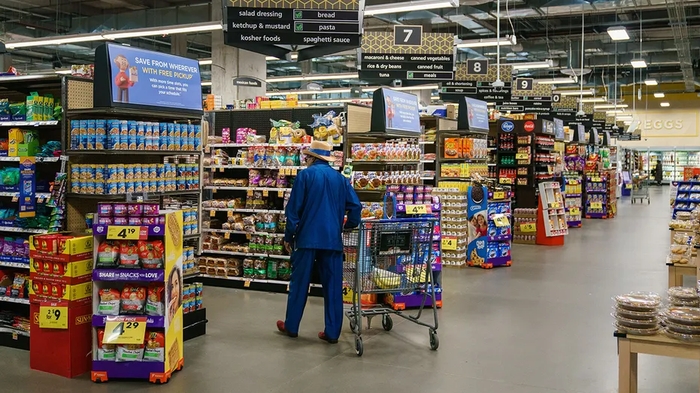By Tom Ozimek
Wholesale inflation accelerated in March, delivering a blow to the narrative that price pressures are easing and dimming hopes for an interest rate cut in the near future.
Inflation from the perspective of business input costs called the Producer Price Index (PPI), rose 2.1 percent in year-over-year terms in March, after a 1.6 percent reading the prior month, per Labor Department data released on April 11.
Besides representing an acceleration in annual terms from the prior month, the March reading of 2.1 percent is the highest since April 2023, when it came in at 2.3 percent.
The inflation index rose 0.2 percent in month-over-month terms in March, lower than the 0.6 percent notched in the prior month but an increase in prices nonetheless.
The main factor driving up wholesale inflation in March was the third consecutive increase in the prices of services. The index for final demand services moved up 0.3 percent in March, while goods went up 0.1 percent.
Implication for Retail Inflation
The wholesale inflation measure tends to be a leading indicator of retail inflation because business input costs tend to get passed along to consumers down the road. The most common measure of retail inflation is the Consumer Price Index (CPI), which also shot up last month.
Retail inflation rose to 3.5 percent in March from 3.2 percent in the prior month. A “core” measure of CPI, which strips out energy and food, came in at 3.8 percent, while a “supercore” gauge that excludes energy, food, and rent accelerated to 4.8 percent, the highest reading in 11 months.
“After months of buildup, the March CPI report officially disconfirmed the consensus ‘immaculate disinflation’ narrative and replaced it with our ’sticky inflation’ theme,” macro analyst Darius Dale wrote in a post on X, formerly Twitter.
The hotter-than-expected retail inflation report sent the Dow Jones falling by over 500 points as it suggested that the Federal Reserve would delay its much-anticipated interest rate cut.
While inflation has fallen from the recent June 2022 peak of 9 percent, the latest data show that price pressures remain elevated, putting pressure on the Federal Reserve to maintain higher interest rates for longer—or even raise them further.
Currently, the federal funds rate is within a range of 5.25–5.50 percent, with markets expecting a single 25 basis-point rate cut by the end of the year.
Meanwhile, the “core” wholesale inflation reading for March was 2.4 percent, a sharp acceleration from the prior month’s 2.0 percent and an indication of persistent underlying inflationary pressures that are likely to trickle down to consumers.
“The latest data confirms what families see at the grocery store: inflation is still a major problem. It will take a long time to fix the mess created by reckless fiscal and monetary policies,” former Secretary of State Mike Pompeo wrote in a post on X, commenting on the latest inflation numbers and offering a criticism of the Biden administration’s deficit spending.
JPMorgan CEO Jamie Dimon offered a similarly critical take on the Biden administration’s ongoing deficit spending, which topped $1 trillion in the first six months of the current fiscal year, in a letter to shareholders earlier this week.
Interest Rates Could Top 8 Percent
Mr. Dimon warned in his letter to shareholders that forces like deglobalization and the Biden administration’s deficit spending were exacerbating price pressures.
“The economy is being fueled by large amounts of government deficit spending and past stimulus,” he wrote.
The deficits of today eclipse those of the past, he noted, adding that what’s different this time around is that fiscal stimulus is taking place during a period of economic expansion rather than pulling the country out of a recession.
“There is also a growing need for increased spending as we continue transitioning to a greener economy, restructuring global supply chains, boosting military expenditure, and battling rising healthcare costs,” Mr. Dimon continued. “This may lead to stickier inflation and higher rates than markets expect.”
His prediction of higher-for-longer inflation, made on April 8, has since been bolstered by both the CPI data released on April 10 and the wholesale inflation numbers released on April 11.
Mr. Dimon warned that the impacts of major economic and geopolitical forces—from high levels of debt and fiscal stimulus to the wars in Ukraine and the Middle East—could deliver nasty surprises to markets.
“There seems to be a large number of persistent inflationary pressures, which may likely continue,” Mr. Dimon wrote.
The JPMorgan CEO then said that Americans should brace for a “very broad range” of Fed interest rates, from 2 percent to 8 percent “or even more, with equally wide-ranging economic outcomes.”
The worst-case scenario would be a combination of high inflation and recession—a toxic mix known as stagflation that would “not only come with higher interest rates but also with higher credit losses, lower business volumes, and more difficult markets.”
He said markets seem to be pricing a roughly 70–80 percent chance of a “soft landing,” meaning that the Federal Reserve’s interest rate hikes would cool the economy enough to lower inflation but without falling into recession.
“I believe the odds are a lot lower than that,” Mr. Dimon warned.
Despite predictions that the Fed’s aggressive rate-hiking cycle would trigger a recession, the numbers haven’t borne this out, due in large part to apparent labor market strength.
However, some preliminary signs of labor market weakness have emerged recently, clouding the economic horizon.
For instance, job-cut announcements in the first quarter of this year rose 120 percent compared to the final quarter of 2023, according to a report from career transitioning firm Challenger, Gray & Christmas.






